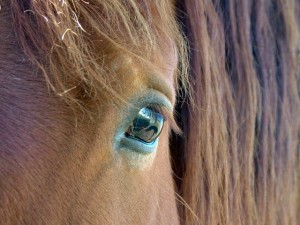Sounds Greek to Me
As the month of February takes off…the topic of connection is at hand. But, how about going beyond our connection to each other, and exploring our connection to the animal realm? Winston Churchill once said, “There is something about the outside of a horse that is good for the inside of a (hu)man.” What is it about this quote that seems to resonate with people who spend time with horses, either for work or pleasure purposes?
The emerging field of Equine Assisted Psychotherapy is proceeding, whether or not the answer to the above question is clear. EAP is psychotherapy with the addition of a horse, or in some cases a group of horses. In an EAP session, there is a participant, a psychotherapist, a horse specialist, and a horse. The participant interacts with the horse with the support of the psychotherapist, and the assistance and safety assurance of the horse specialist. The incorporation of horses into therapy provides an experiential opportunity for healing that goes beyond traditional methods. Both the psychotherapist and horse specialist must have specific training in EAP. Since its founding in 1999, the Equine Assisted Growth and Learning Association, an international non-profit providing EAP training, has granted over 3,000 certifications.
What’s going on here?
The unique human connection to horses is documented as far back as ancient Greece, by Greek historian and philosophical essayist, Xenophon. Born in Athens around 430 B.C.E. Xenophon was studying the way the relationship between horse and rider can be an expression of the archetype of Beauty. In her book, Dressage in the Fourth Dimension, author Sherry Ackerman, explains Xenophon’s view this way, “The ancient teaching held that Beauty was expressed by harmony which was born of perfect balance. The body, mind and spirit of the rider were to attain this integrated state of balance…a harmonious partnership between horse and rider, which expressed itself in Beauty.”
Practitioners and participants of EAP often remark that it is the horse’s demeanor that is healing. Horses have a quiet and observant nature, and they are extremely responsive. Given their status as prey animals, they also display a constant vigilance. These traits can be modeled for EAP participants, especially to those who have experienced trauma from a loved one or family member, for example sexual trauma. Survivors of sexual trauma have a need to rebuild skills in trusting the connection in human relationships, and often can benefit from objective validation of their instincts. In other words, if one has been violated by a loved one, the lines between appropriate and inappropriate treatment are blurred. Horses, with the traits mentioned above, model what is accepted in the animal kingdom and what is not tolerated. Being immersed in a pack of horses, participants get an understanding of appropriate and loving ways to be in relationship. In effect, the horses provide a bridge for the participants in re-establishing appropriate and loving human relationships.
Perhaps it is through EAP we get to see another incarnation of Xenophon’s idea of the expression of Beauty, that being the beauty of one species giving to another a model for loving connection.
What do you think? How have you seen the beauty of the human & animal connection displayed in your life?
Note: If you’d like to learn more about how EAP, here are two groups that are leading the way: http://www.medicinehorse.org/ and http://www.movingtoendsexualassault.org/
Note 2: I originally published this post on www.depthpsychologytoday.com on February 5, 2009.
![Reblog this post [with Zemanta]](http://img.zemanta.com/reblog_e.png?x-id=e398f091-2e22-49de-ab8e-e50aca16c7a8)
